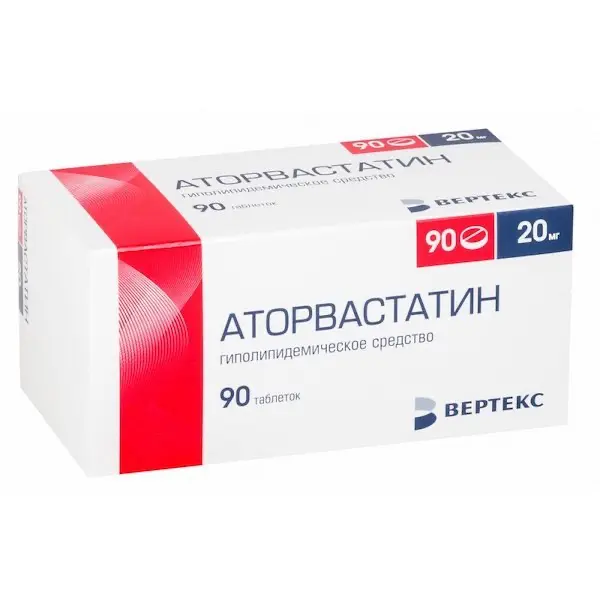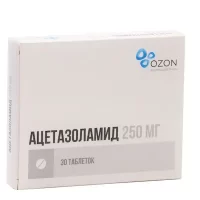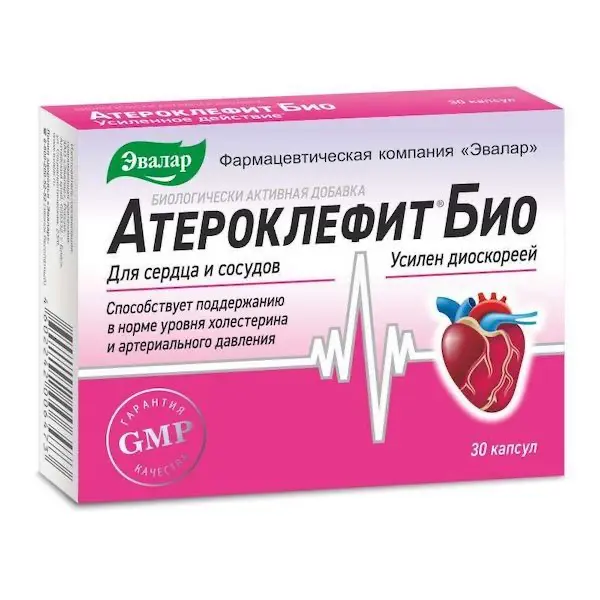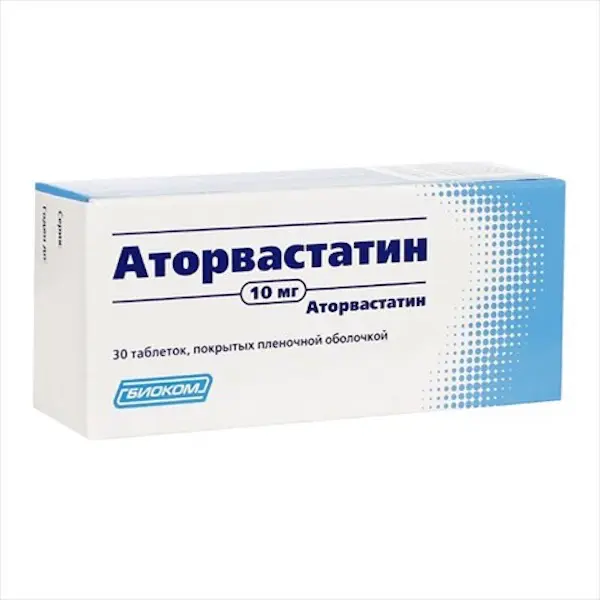Description
Atorvastatin Pharmacodynamics
Hypolipidemic drug from the group of statins. Selective competitive inhibitor of HMG-CoA reductase – the enzyme, which converts
3-hydroxy-3-methylglutaryl coenzyme A into mevalonic acid, which is a precursor of sterols, including cholesterol.
Triglycerides (TG) and cholesterol in the liver are incorporated into very low-density lipoproteins (VLDL), entered into the blood plasma and transported to peripheral tissues. Low-density lipoproteins (LDL) are formed from VLDL during interaction with LDL receptors. Atorvastatin reduces plasma concentrations of cholesterol and lipoproteins by inhibiting HMG-CoA reductase and cholesterol synthesis in the liver and by increasing the number of “hepatic” LDL receptors on the cell surface, which leads to increased capture and catabolism of LDL. Reduces LDL formation and causes a pronounced and persistent increase in LDL receptor activity. Reduces LDL concentration in patients with homozygous familial hypercholesterolemia, which usually does not respond to therapy with hypolipidemic agents. Reduces total cholesterol concentration by 30-46%, LDL concentration by 41-61%, apolipoprotein B concentration by 34-50% and TG concentration by 14-33%; causes increase in HDL (high-density lipoprotein) cholesterol and apolipoprotein A concentration. Dose-dependently reduces LDL concentration in patients with homozygous hereditary hypercholesterolemia, resistant to therapy with other hypolipidemic agents.
Genetic polymorphism.
Hepatic uptake of all HMG-CoA reductase inhibitors, including atorvastatin, involves OATP1B1 transport protein. In patients with genetic polymorphism of SLCO1B1 gene encoding OATP1B1, there is a risk of increased plasma atorvastatin exposure (AUC), which may lead to increased risk of rhabdomyolysis. Carriers of SLCO1B1 s.521CC genotype have 2.4 times increased systemic atorvastatin plasma exposure (AUC) compared to SLCO1B1 s.521T genotype carriers. Impaired hepatic uptake of atorvastatin associated with genotypic abnormalities may also be observed in these patients. Possible effects with regard to efficacy are unknown.
Indications
Atorvastatin is used:
– in combination with diet to reduce elevated concentrations of total cholesterol, cholesterol/LDL, apolipoprotein B and triglycerides and increase HDL cholesterol concentrations in patients with primary hypercholesterolemia, heterozygous familial and non-familial hypercholesterolemia and combined (mixed) hyperlipidemia (Fredrickson types IIa and IIb);
– in combination with diet for the treatment of patients with increased serum concentrations of triglycerides (Fredrickson type IV) and patients with dysbetalipoproteinemia (Fredrickson type III), in which diet therapy does not give an adequate effect;
– For lowering total cholesterol and LDL cholesterol/LDL concentrations in patients with homozygous familial hypercholesterolemia, when diet therapy and other non-pharmacological methods of treatment are not effective enough.
Contraindications
– Hypersensitivity to drug components;
– Active liver disease or increased “liver” enzyme activity of unexplained origin (more than 3 times the upper limit of normal);
– Liver failure (degree of severity according to the Child-Pugh A and B scale)
– pregnancy;
– lactation;
– Women of reproductive age who do not use adequate methods of contraception;
– Under 18 years of age (efficacy and safety have not been established);
– concomitant use with fusidic acid;
– lactose intolerance, lactase deficiency and glucose-galactose malabsorption syndrome (the drug contains lactose).
Caution: alcohol abuse, liver diseases in anamnesis, severe electrolyte balance disorders, endocrine and metabolic disorders, arterial hypotension, severe acute infections (sepsis), uncontrolled epilepsy, extensive surgical interventions, injuries, skeletal muscle diseases.
Use in pregnancy and lactation: Atorvastatin is contraindicated for use during pregnancy and lactation (breast-feeding).
It is unknown whether atorvastatin is excreted with breast milk. Taking into account the possibility of adverse effects in breastfed children, if it is necessary to use the drug during lactation, breastfeeding should be discontinued.
Women of reproductive age should use adequate contraceptive methods during treatment. Atorvastatin can be used in women of reproductive age only if possibility of pregnancy is very low and a patient is informed about possible risk of treatment for fetus.
Dosage and administration
- Before Atorvastatin administration, the patient should be recommended a standard hypolipidemic diet, which he should continue to follow during the entire period of therapy.
The initial dose is on average 10 mg once daily. The dose varies from 10 to 80 mg once daily. - The drug can be taken at any time of the day with food or regardless of the time of meals. The dose is adjusted taking into account the initial cholesterol/LDL concentrations, the purpose of therapy and individual effect. At the beginning of treatment and/or during dose increase of Atorvastatin, plasma lipid concentrations should be monitored every 2-4 weeks and the dose should be adjusted accordingly.
- Primary hypercholesterolemia and mixed hyperlipidemia, as well as Fredrickson type III and IV.
- In most cases, a dose of 10 mg of Atorvastatin once daily is sufficient. Significant therapeutic effect is observed after 2 weeks, as a rule, and the maximum therapeutic effect is usually observed after 4 weeks. With prolonged treatment, this effect persists.
Homozygous familial hypercholesterolemia.
It is used in a dose of 80 mg (4 tablets of 20 mg) once a day. - Administration in patients with renal insufficiency and kidney diseases does not influence on Atorvastatin level in plasma or on the degree of cholesterol/LDL decrease during this medicine use, therefore it is not required this medicine dose change.
In case of hepatic impairment, the dose should be reduced (see sect. “Caution” and “Special indications”). - When using the drug in elderly patients, no differences in safety, efficacy or achievement of the goals of hypolipidemic therapy in comparison with the general population have been observed.
- Use in combination with other medicinal agents.
If combined use with cyclosporine, telaprevir or tipranavir/ritonavir combination is necessary, the dose of Atorvastatin should not exceed 10 mg/day (see section “Cautions”). - Caution should be exercised and the lowest effective dose of atorvastatin should be used concomitantly with HIV protease inhibitors, hepatitis C protease inhibitors (boceprevir), clarithromycin and itraconazole.





